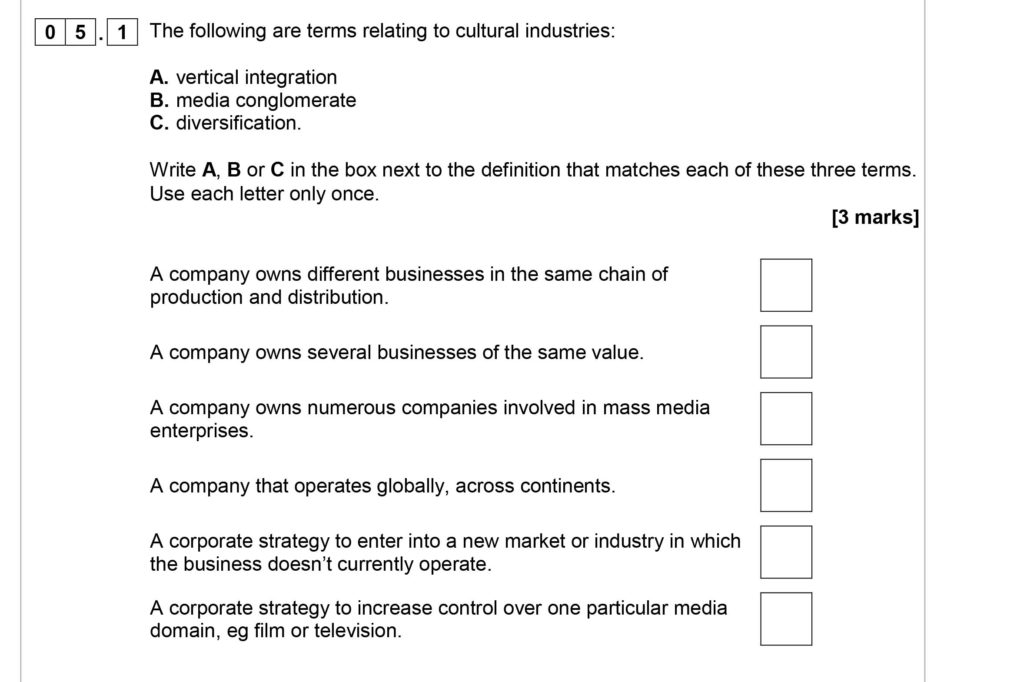SEMIOTICS
ROLAND BARTHES – Concept 1: Denotation and Connotation
Barthes’ tells us by using a ‘denotative reading’ is how viewers decode media products. This occurs when a reader recognises the literal and physical content, e.g. an older man with his fist in the air, the style and colour of clothing. After this, readers quickly move beyond the recognition of the product and engage with what he calls ‘cognitive decoding.’ This refers to the deeper understanding prompted by advertisers to the emotional, symbolic/ideological significances, e.g. the older man’s fist may suggest defiance or aggression, the clothes may suggest a class.
WHEN LOOKING AT A MEDIA TEXT:
| Image Features: | Look out for: |
| POSE (Subject positioning, stance or body language) | Breaking the 4th wall creates: confrontational/aggressive or invitational feel. Off screen gaze: Right side – adventure/optimism. Left side – regret/nostalgia. Body language: strong/weak/passive/active/open/closed Subject Positioning: Where the person/people stand. Proxemics: Their distance from people/things. |
| MISE-EN-SCENE (Props, costume and setting) | Symbolic Props: rarely accidental Pathetic fallacy: weather connotations to add meaning – character’s thoughts/tone Costume Symbolism: Stereotypes help to decipher a character’s narrative function |
| LIGHTING CONNOTATIONS | High-Key lighting: no shadows – positive and upbeat with a lighter feel Low-Key lighting: Serious/ sad/moody connotations. Chiaroscuro lighting: contrast lighting (light sharply cuts through darkness) – hopelessness/mystery Ambient: infers realism |
| COMPOSITIONAL EFFECTS (Shot distance, positioning of subjects in the frame) | Long shots: dominated their environment Close-ups: intensifies emotions/impending drama Open/closed frames: open- freedom, closed – entrapment |
| POSTPRODUCTION EFFECTS | Colour control: Red- anger, white – innocence High saturation: Vibrant colours – cheerful Desaturation: Dull colours – serious/sombre |
Barthes’ recognised that text also gave meaning. He says it helps to ‘anchor’ image meanings in advertisements. Without anchorage, media imagery is likely to produce polysemic connotations (multiple meanings).
“a vice which holds the connotated meanings from proliferating”
Concept 2: The media’s ideological effect
Barthes’ suggests media replaces/replicates functions of myth making. The press, television, advertising, radio – convey the same sort of authority as myths and induce similar ideological effects. Anonymisation of myths shows it’s a collective view rather than singular –> media replicates this.
Naturalisation: Media products present ideas as natural/fact/common sense. When a range of media texts repeat the same idea, audience believe it is a fact rather than perspective, social norm.
Media myths are reductive: Media simplifies and reduces/purifies ideas to make it more digestible. – message reduction discourages audiences to question and analyse thoroughly.
Media myths reinforce existing social power structures: “the oppressor has everything, his language is rich, multiform, supple.” Those who have power tend to control the myth making process through the privileged access – maintain illusion that the system that benefits the powerful is naturally ordered and unchangeable.
C.S PEIRCE:
Peirce did not believe that signification was a straightforward binary relationship between a sign and an object, he viewed this innovative part of his triad as how we perceive or understand a sign and its relationship to the object it is referring to. The representamen in Peirce’s theory is the form the sign takes, which is not necessarily a material or concrete object. Peirce theorised that we interpret symbols according to a rule, a habitual connection. ‘The symbol is connected with its object because the symbol-user and a sign exists mainly due to the fact that it is used and understood. Peirce’s triad of signs concludes of:
Icon – A sign that looks like an object/person, e.g picture of a lamp.
Index – A sign that has a link to its object, e.g smoke and fire.
Symbol – A sign that has a more random link to its object, e.g colour, shape
FERDINAND DE SAUSSURE:
According to Saussure theory of signs, signifier and signified make up of signs. A sign is composed of both a material form and a mental concept. The signifier is the material form, i.e., something that can be heard, seen, smelled, touched or tasted, whereas the signified is the mental concept associated with it. C.S Peirce based his research off of Saussure.
Signifier – Stands in for something else.
Signified -Idea being evoked by signifier.


